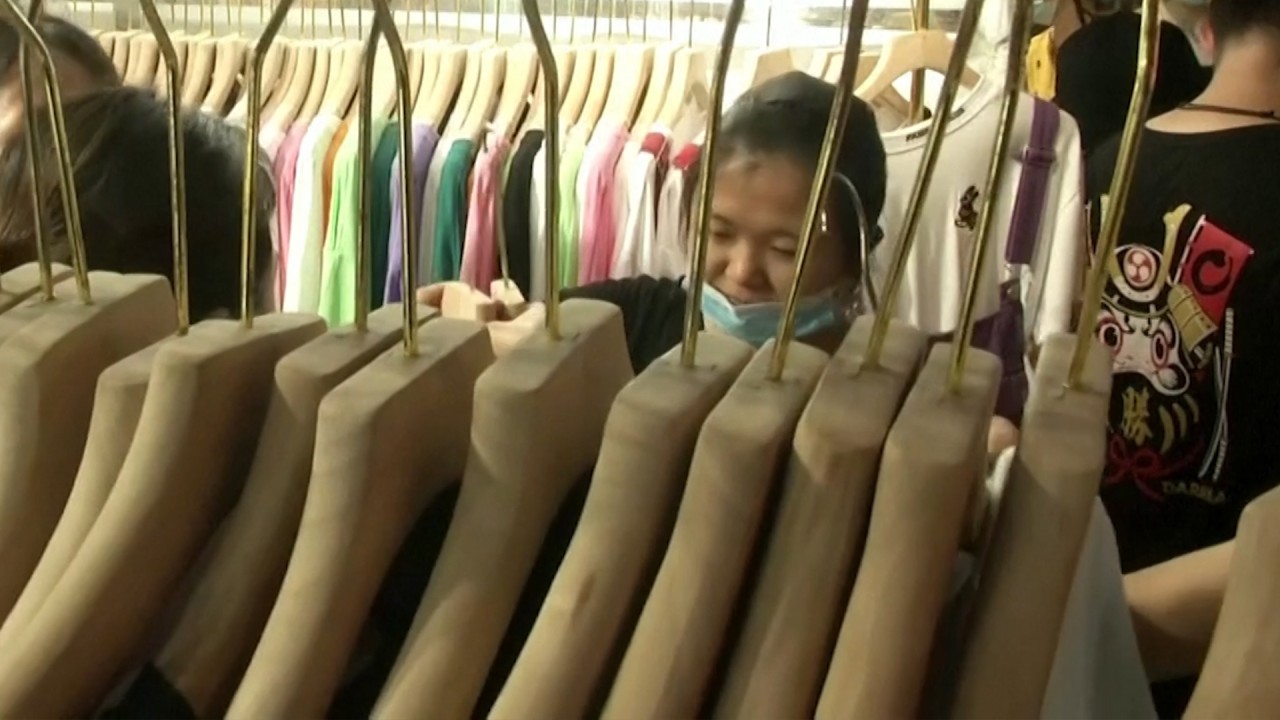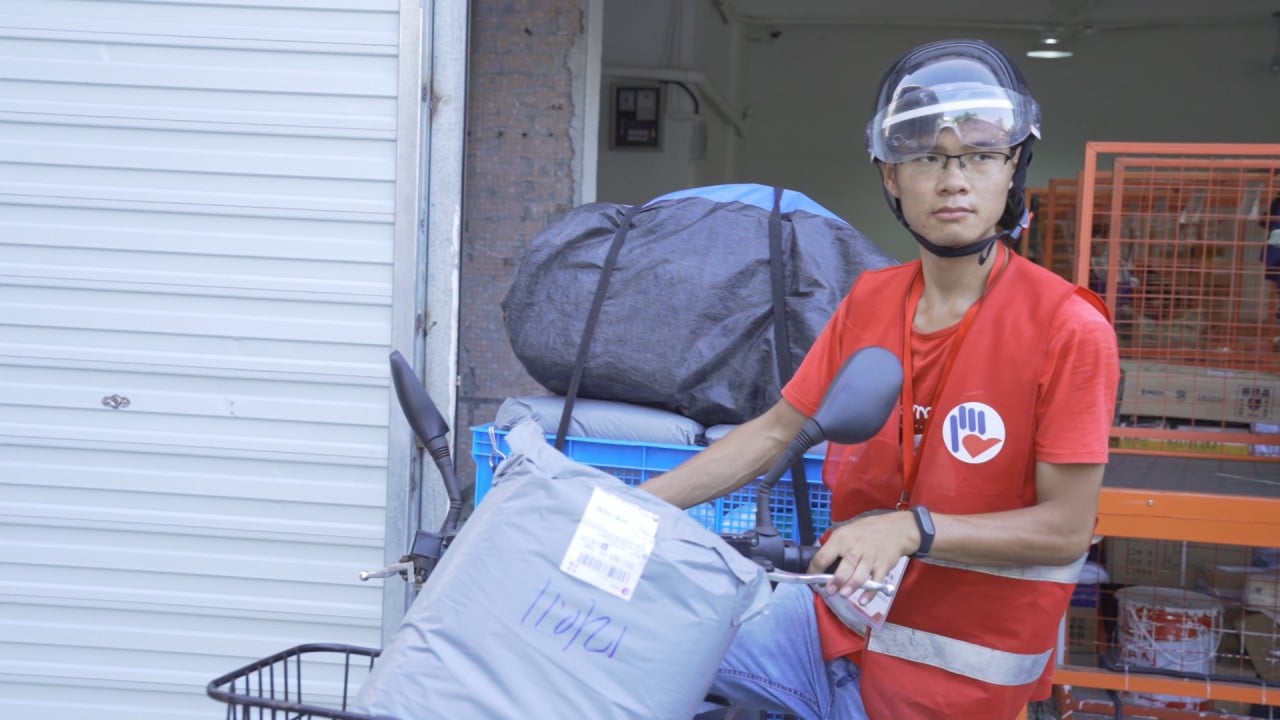
China’s two-speed economic recovery leaves migrant workers and small businesses lagging behind
- Migrant workers and garment factories in Guangzhou are still reeling from the impact of the coronavirus, as weak demand for orders has left scores without work
- China is the only G20 economy expected to report positive economic growth this year, but it has been sectors close to the government that have benefited the most
Every morning, Qiaonan New Street in Guangzhou, the capital city of Guangdong province, appears to be bustling with shoppers looking through its stalls of fabrics and textiles.
But on closer inspection, the 500m-long street starts to resemble something akin to an open air job market, filled with thousands of migrant workers searching for employment at nearby garment workshops and factories that supply Zhongda market, China’s largest fabric market.
“I work hard, but still do not earn enough to support my family,” said Hu Lixiu, a migrant worker from the central province of Hubei, who was looking for work to supplement her regular job. “I think we are now even earning less than in June or July.”
For a 14-hour shift that usually starts at 7am, Hu could earn as little as 165 yuan (US$24) sewing accessories.

02:03
Business still terrible in Wuhan, despite end of lockdown at China’s first coronavirus epicentre
“I have only earned about 2,000 yuan over the past half month, but I need to pay the rent and support my old parents and children in my hometown,” she said.
While workers are flocking to the area, factory owners are increasingly unable to provide jobs.
Huang Weijie, who owns a small garment factory in the area, said stable employment was disappearing because of uncertainty in new orders.
“I can’t afford to hire any full-time workers now,” he said, adding orders had collapsed and he usually hires workers from the open-air labour market on a daily basis.
“I have been working with the industry for over 10 years and I have never seen so many people huddling together to find odd jobs. The pay is much lower and less stable than it was over the past couple of years.”
The situation on Qiaonan New Street highlights China’s two-speed economic recovery from the coronavirus crisis.
While the country is the only Group of 20 economy expected to report positive economic growth this year, that momentum has been concentrated in sectors that have benefited from state help.
But the country’s traditional factories are suffering from weak demand for their products, leaving millions of workers underemployed.
This poses a problem for Beijing’s new “dual circulation” economic strategy, which will focus on making the domestic economy the driver of growth in an increasingly hostile external environment. Lower incomes, especially among China’s estimated 270 million migrant workers, mean less consumer spending.

02:39
The ‘Yiwu Index’: How a Chinese city could predict the result of the US Presidential election
He Keng, an outspoken economist and former lawmaker, said in an interview with website Netease.com that the environment facing China’s small businesses was particularly worrisome, even though the Chinese economy as a whole was recovering.
“If the situation among small enterprises is not good, the employment situation will obviously be bad,” he said.
China created 7.81 million urban jobs in the first eight months of this year, 2 million fewer than the same period last year, official data showed.
Unemployment was particularly serious among migrant workers, many of whom were not counted in official jobless statistics, He said.
Huang said traditional manufacturers like him were in deep trouble, as orders were low and unsold inventories piling up.
“Clothes designed for the spring season that were sent late will be on shelves at the same time as products for the fall and winter season,” Huang said.
Compared with a year ago, when Zhongda market was bustling with visitors and vehicles delivering goods, the roads nearby have never been so empty, he said.
Made up of 50 markets of varying size, Zhongda market extends over more than 10 million square metres (107.6 million square feet), three times the size of New York’s Central Park, with more than 20,000 merchants and 100,000 employees trading 100,000 different kinds of fabrics, textiles and garments.
Vendors are not optimistic about a recovery of export orders this year, said Peng Biao, an analyst with Fashionprint.com, which closely follows the industry and its supply chain.

03:24
China’s delivery business provides a career path for the deaf
“The overall order volume of exports increased from July to August, but the type of products has changed from previous years,” she said. “What we see are more flags, scarves and mask-related products. Many factories have lowered wholesale prices due to fierce competition.
“As an example, take a Jiangxi-based factory that exports underwear to the US and Canada. It has cut back from its original 13 production lines last year to seven production lines, and the order volume has fallen by as much as 40 per cent compared to a year ago,” Peng said.
And fewer orders and reduced prices have filtered down to workers.
“We can only get four yuan for sewing a denim skirt, 10 for a shirt and 15 for a windbreaker,” said Hu, the migrant worker from Hubei. “No matter how hard I work, I only can earn around 150 yuan per day.”

